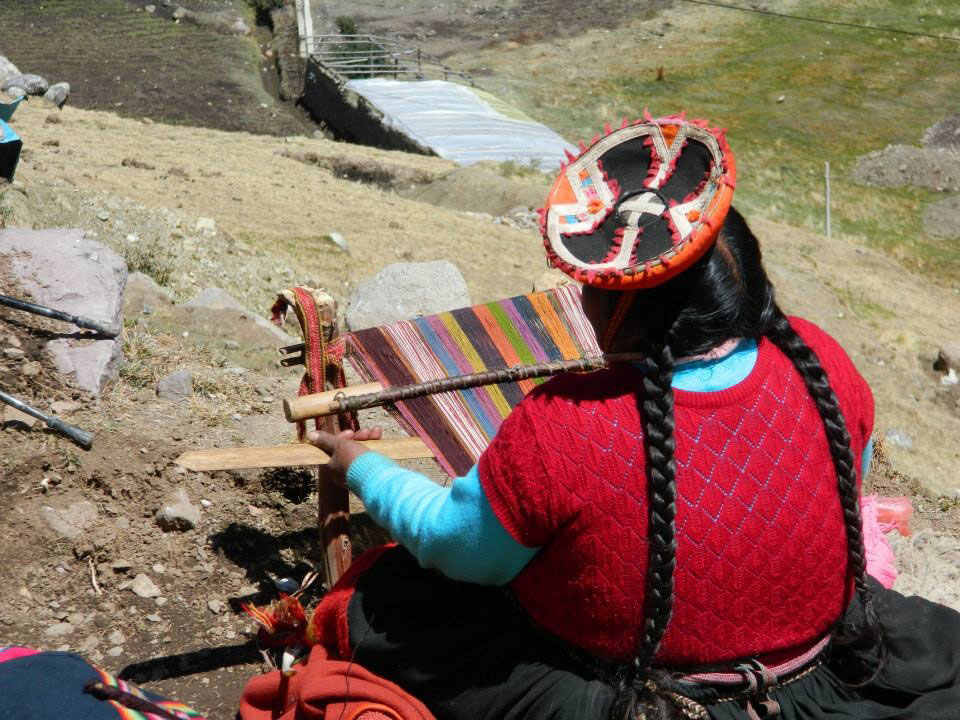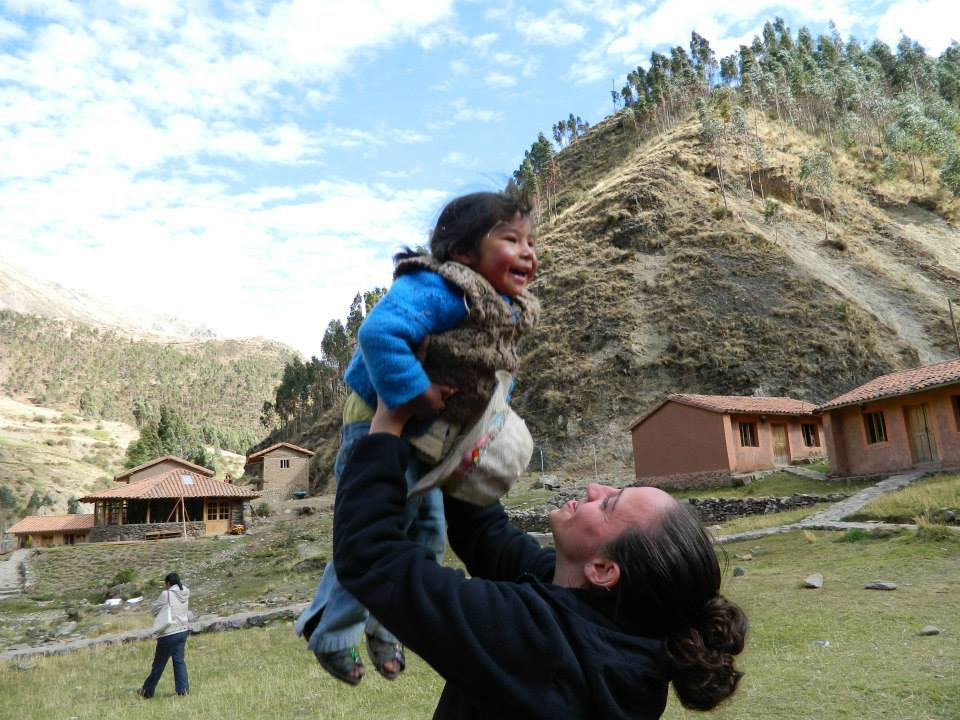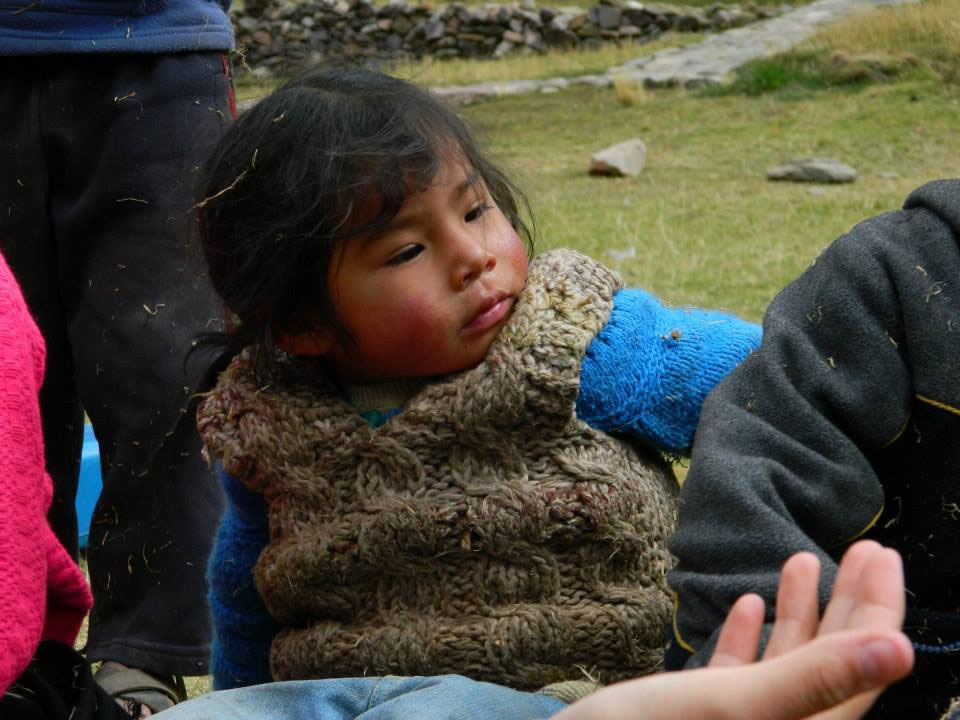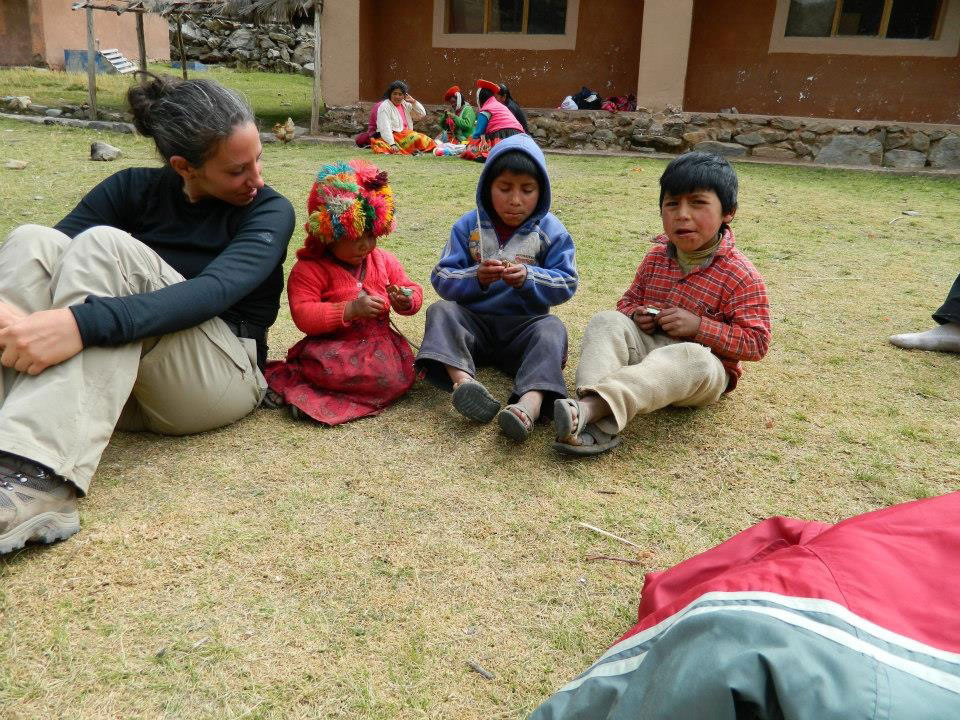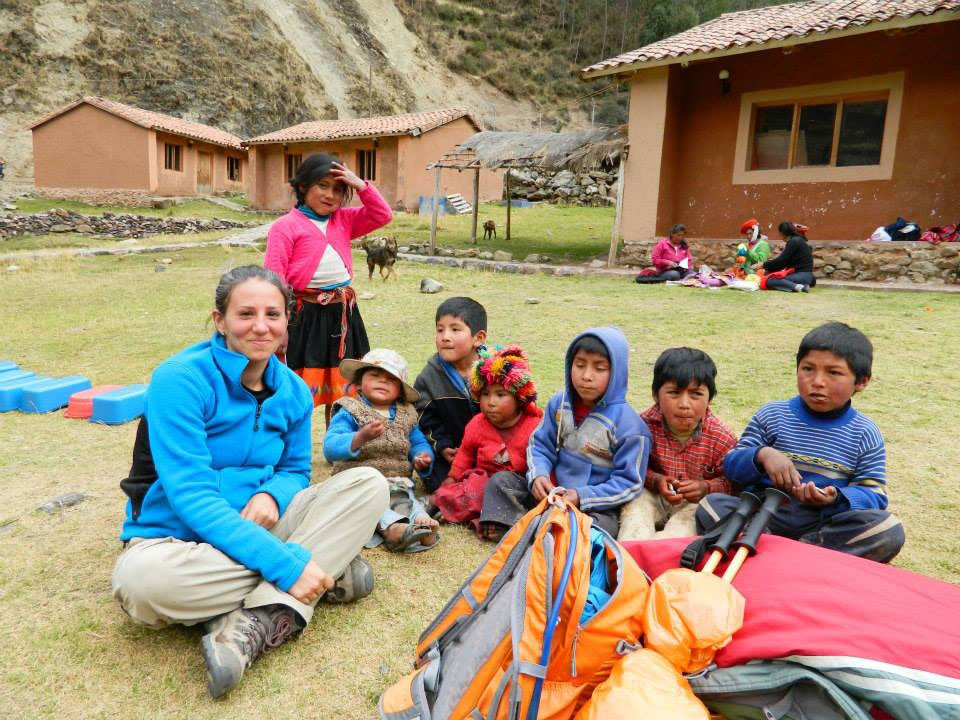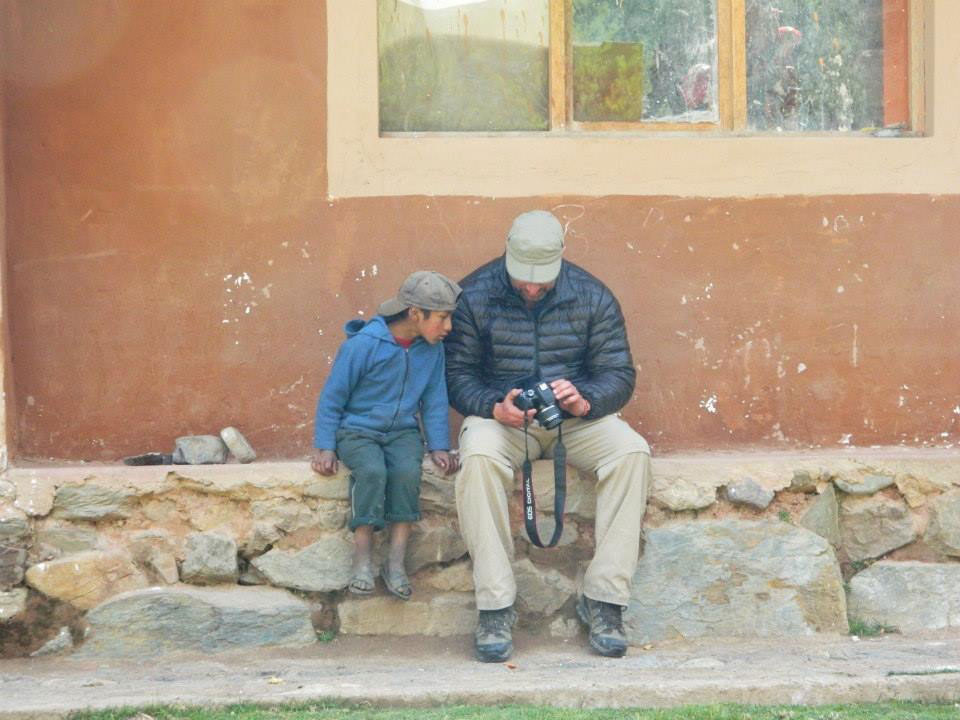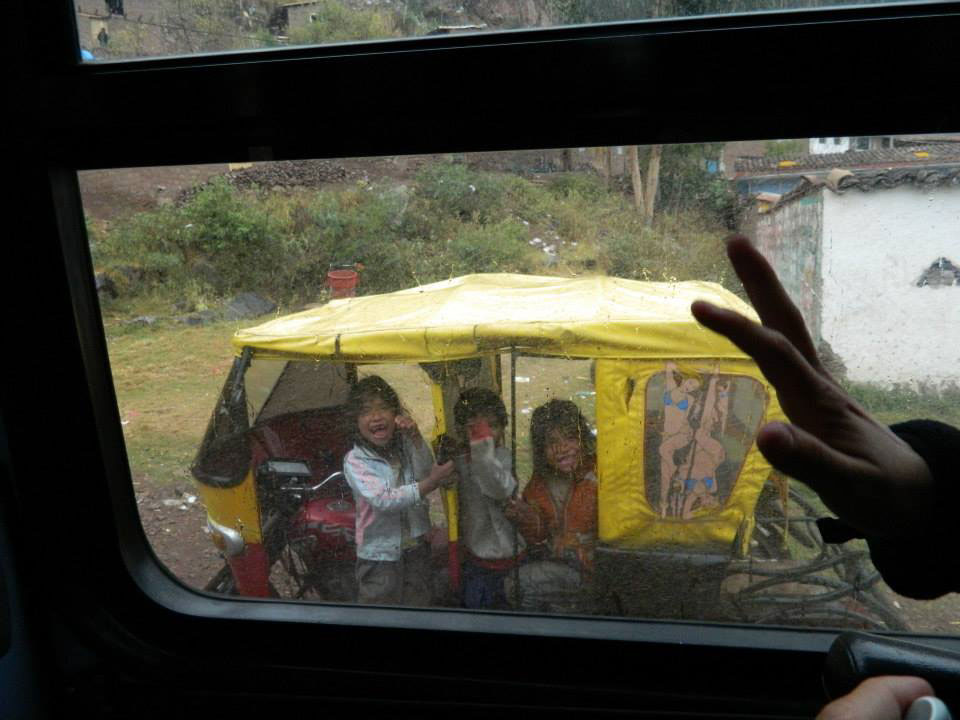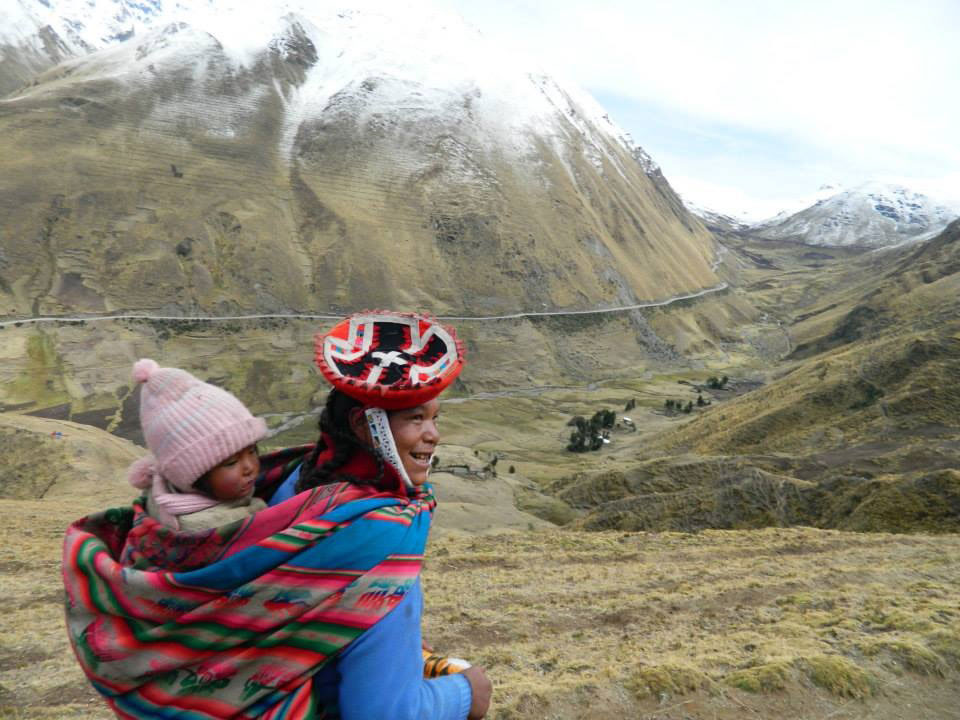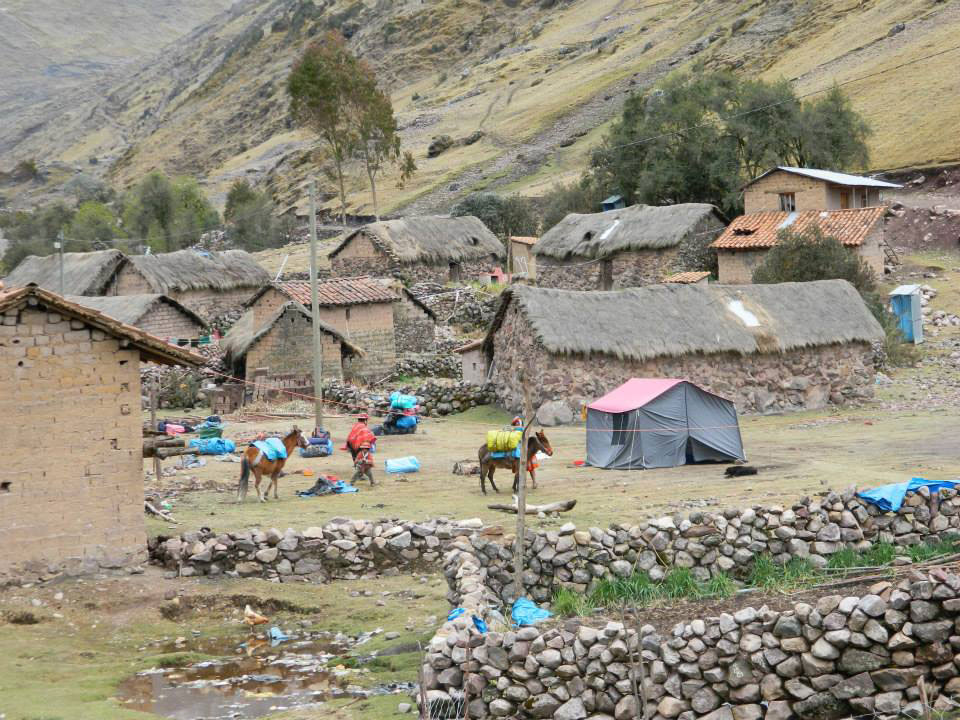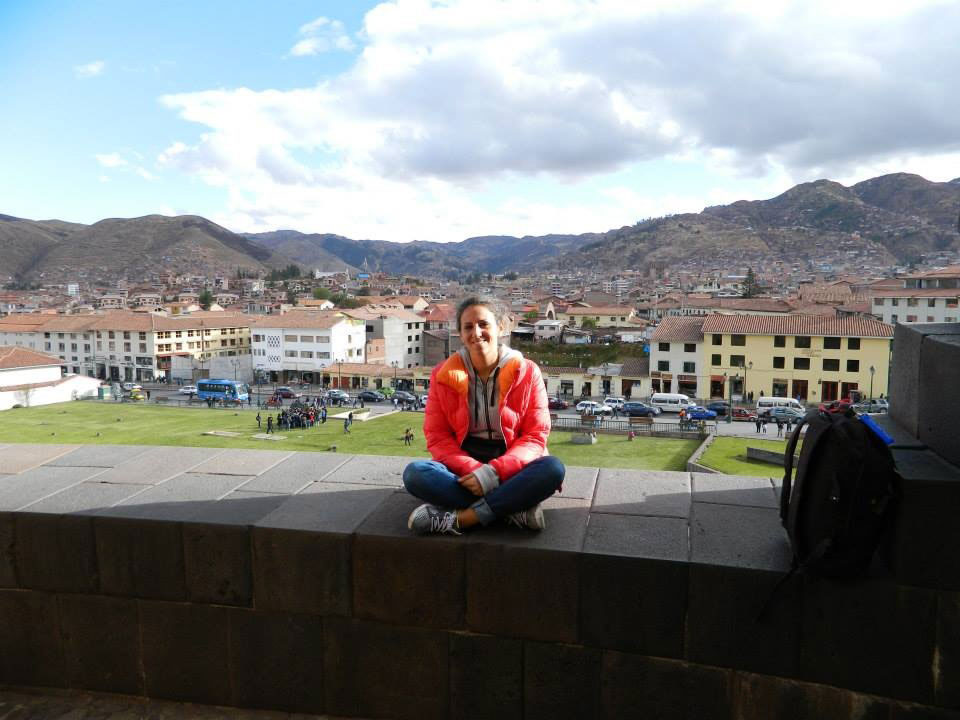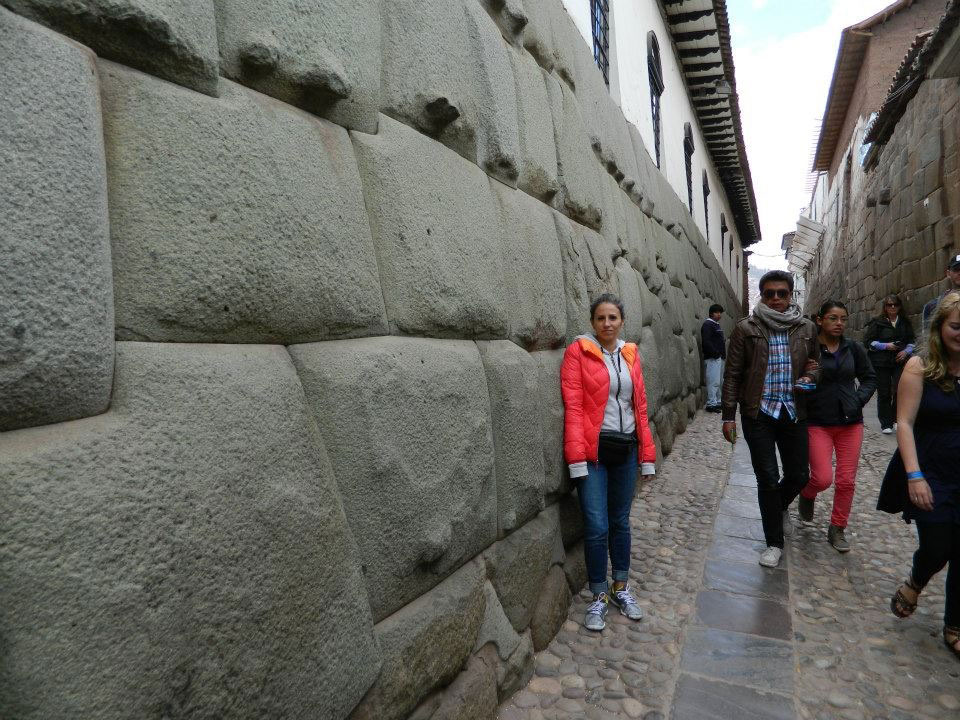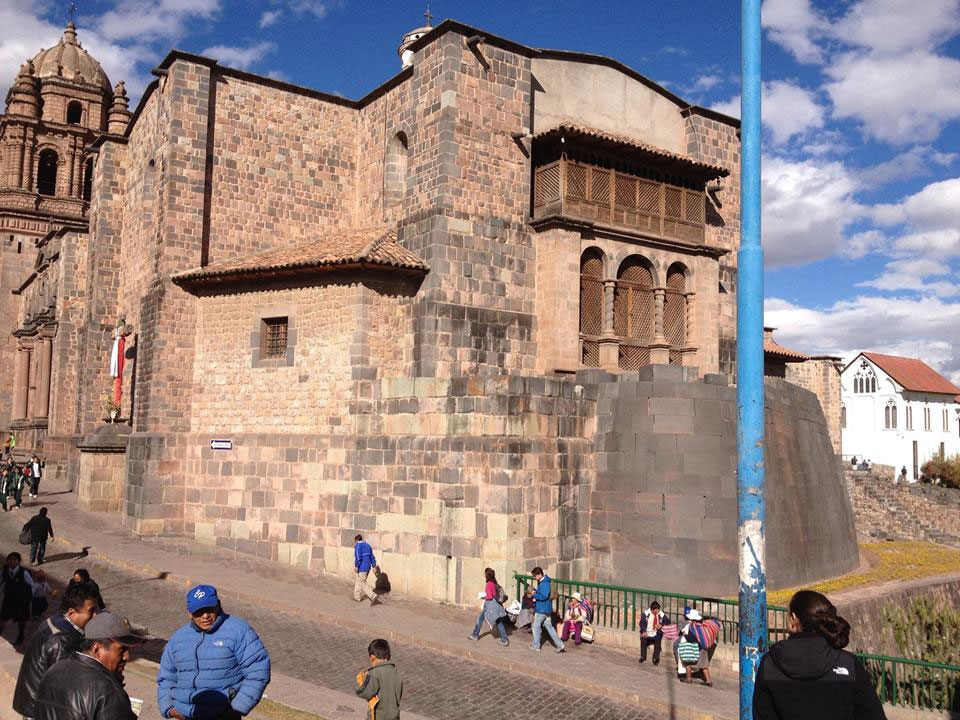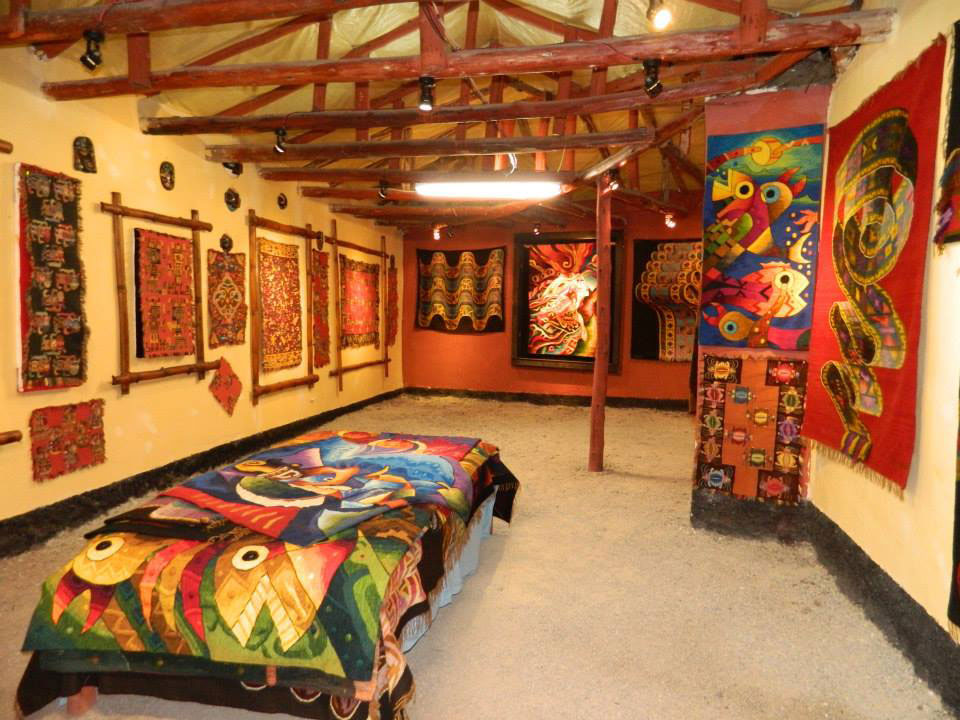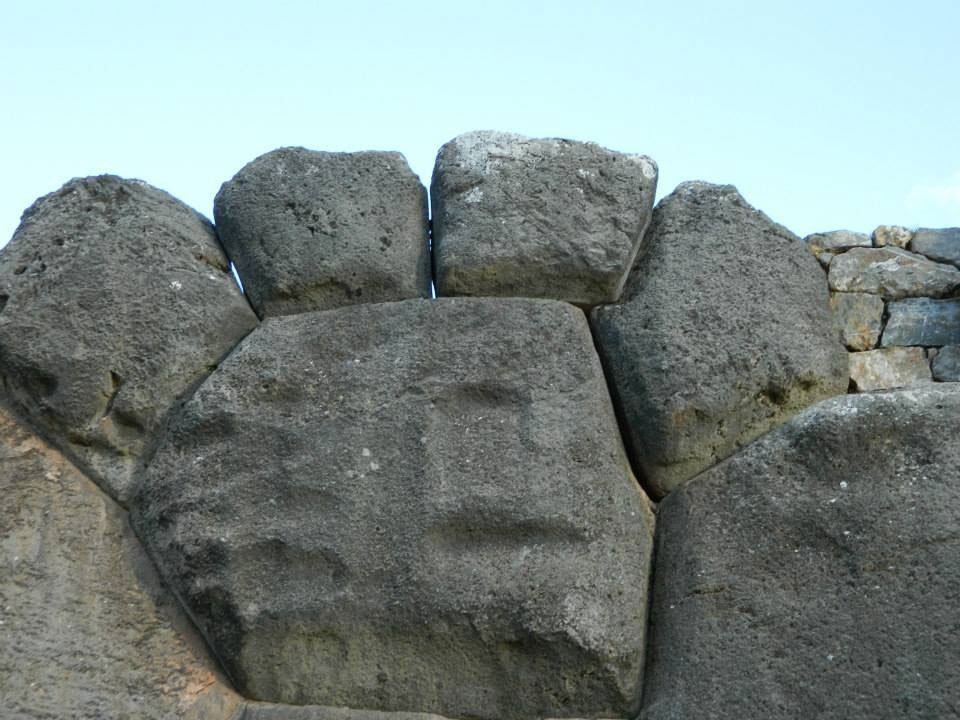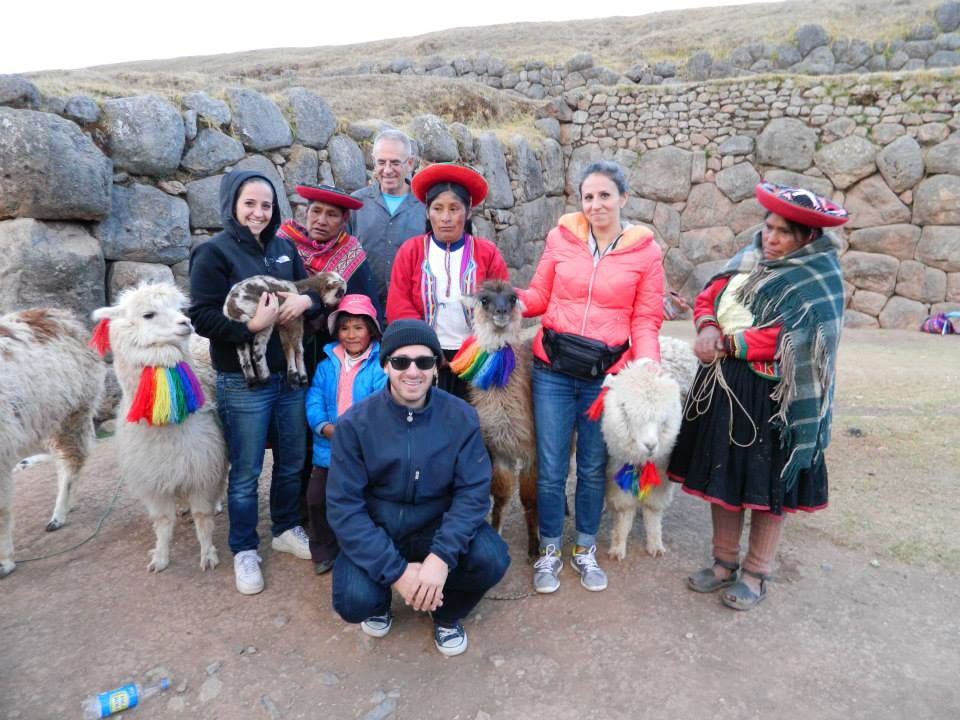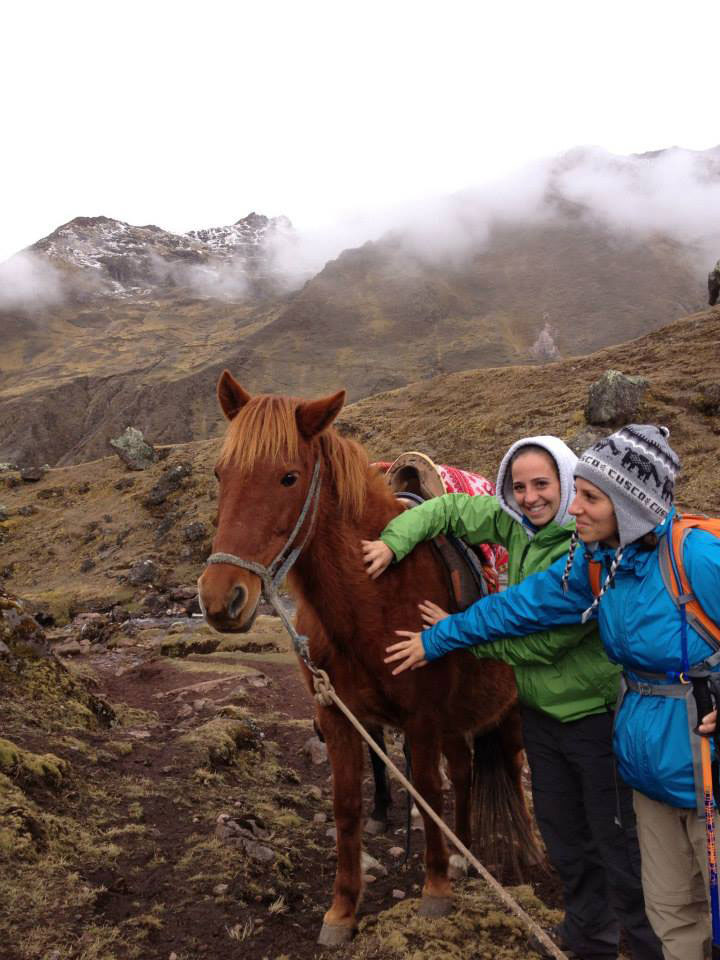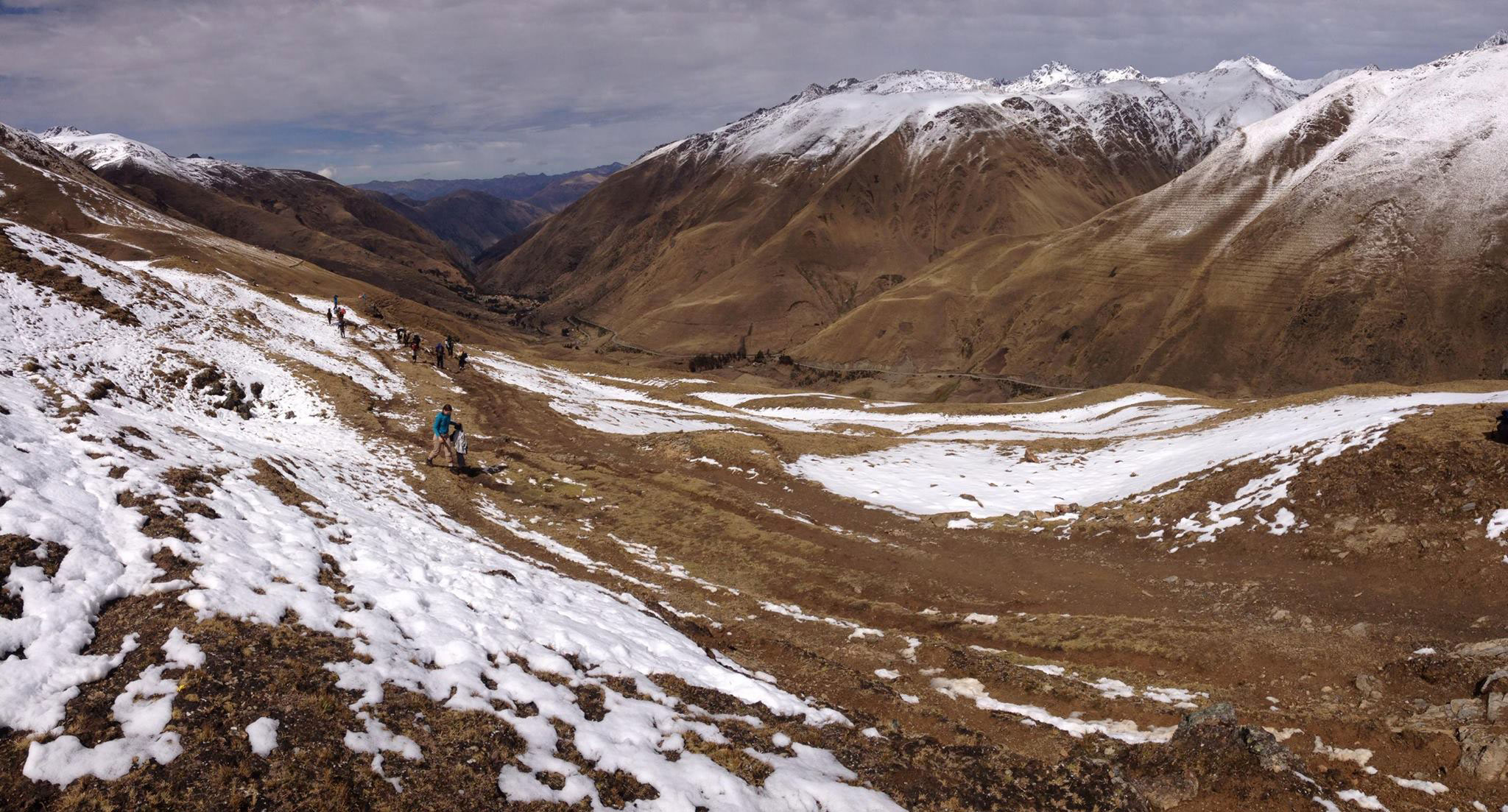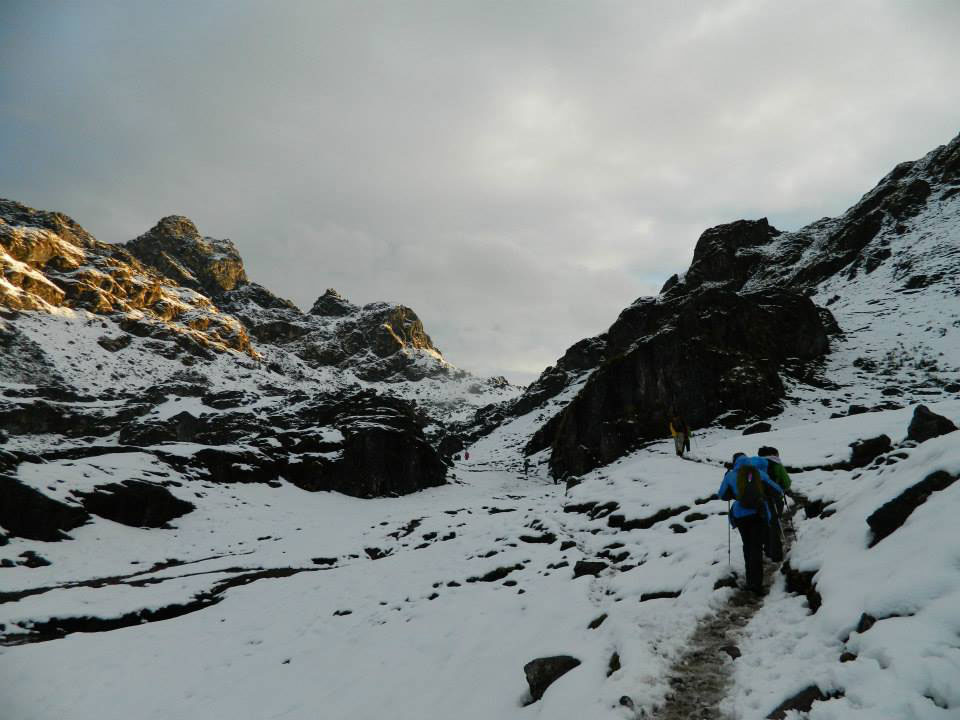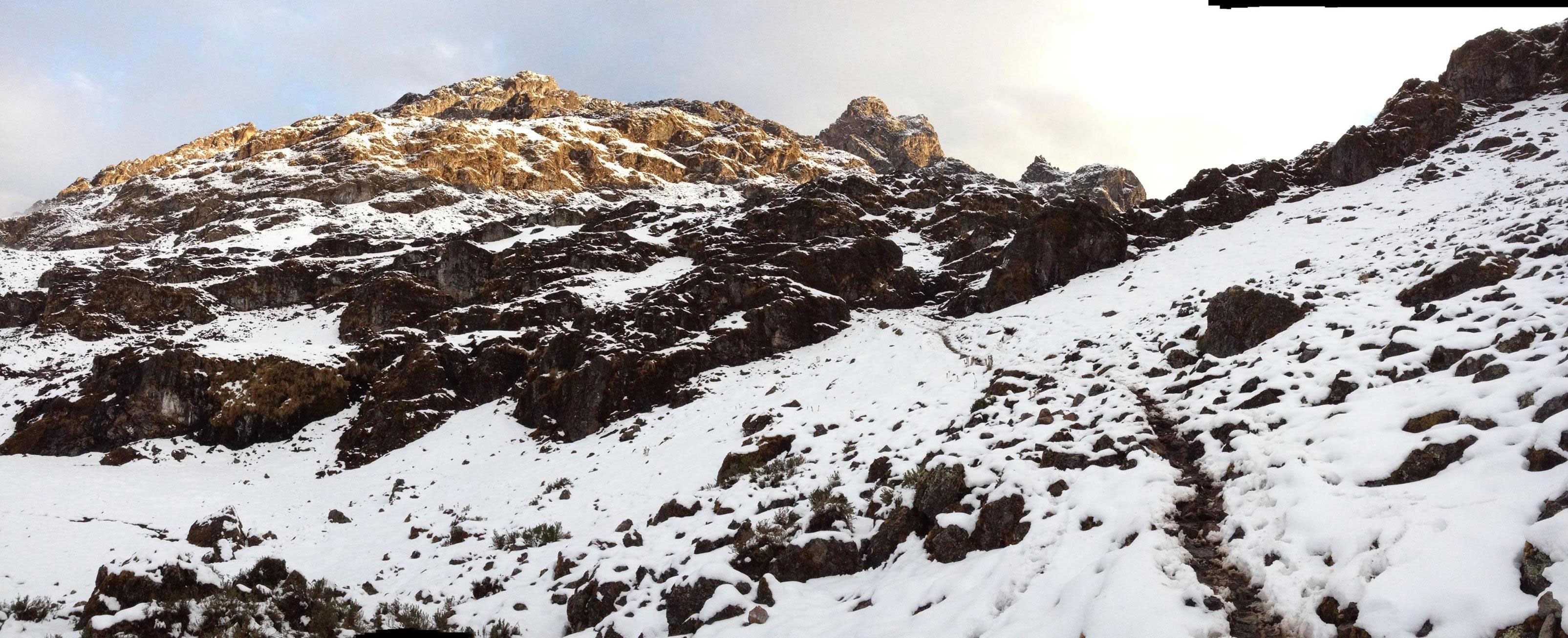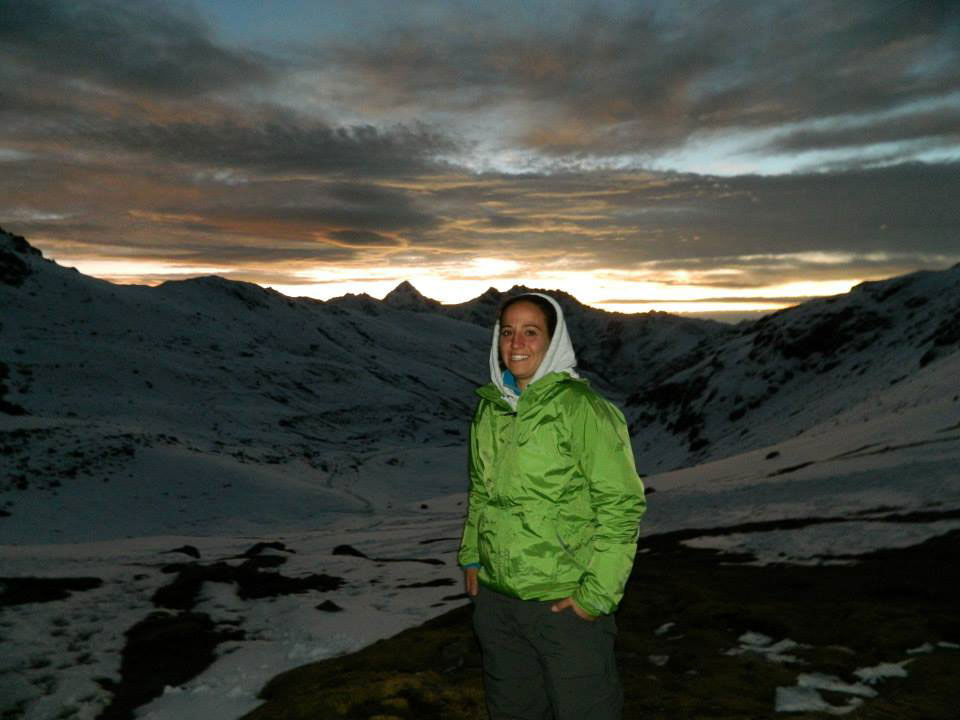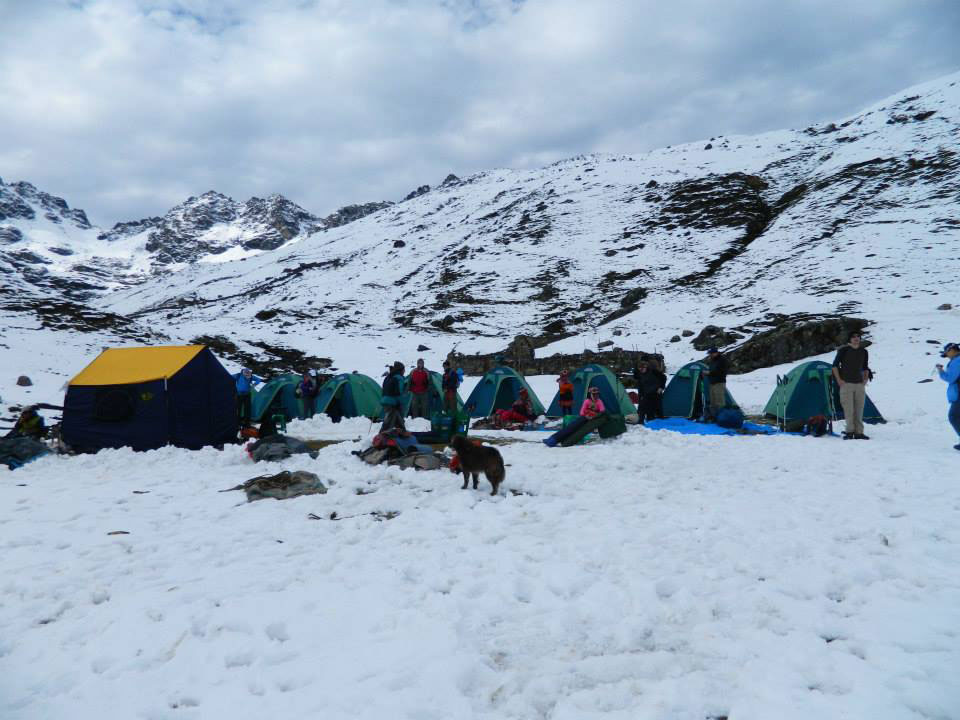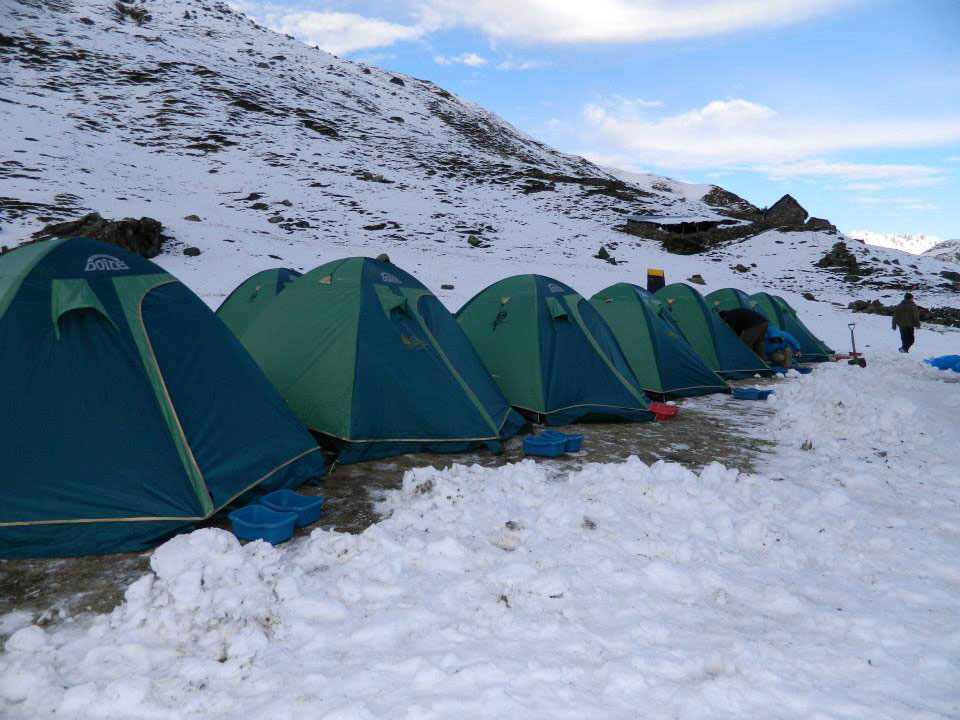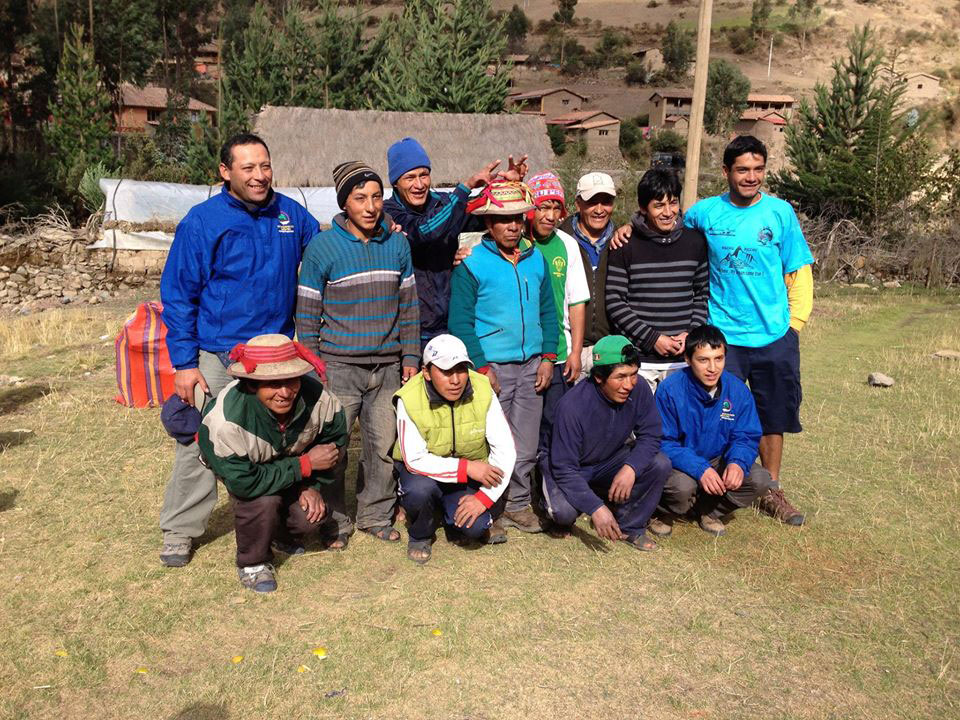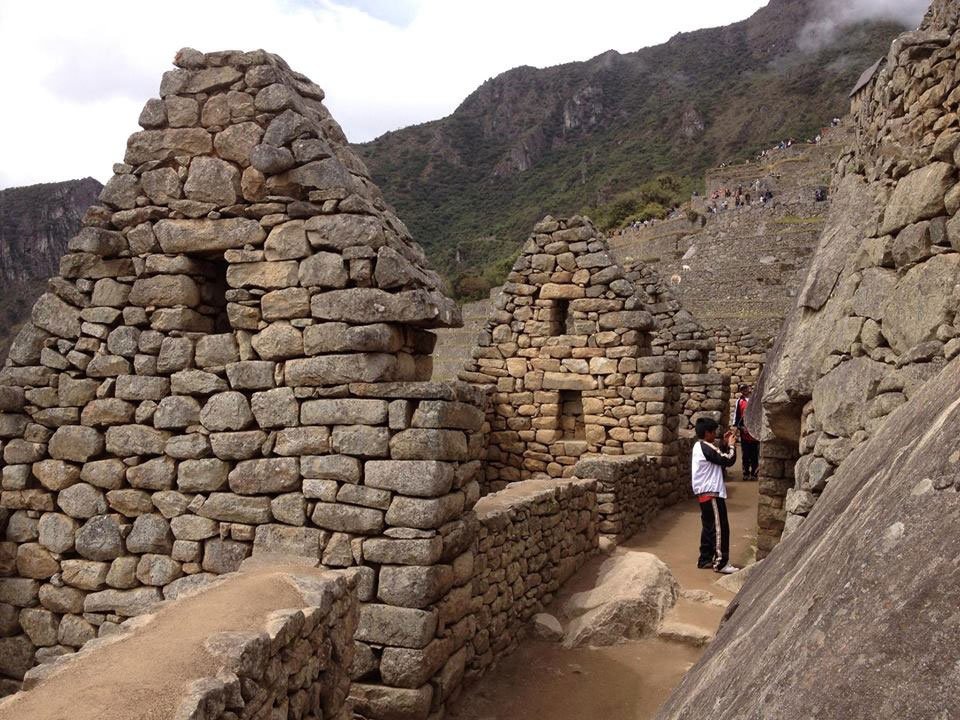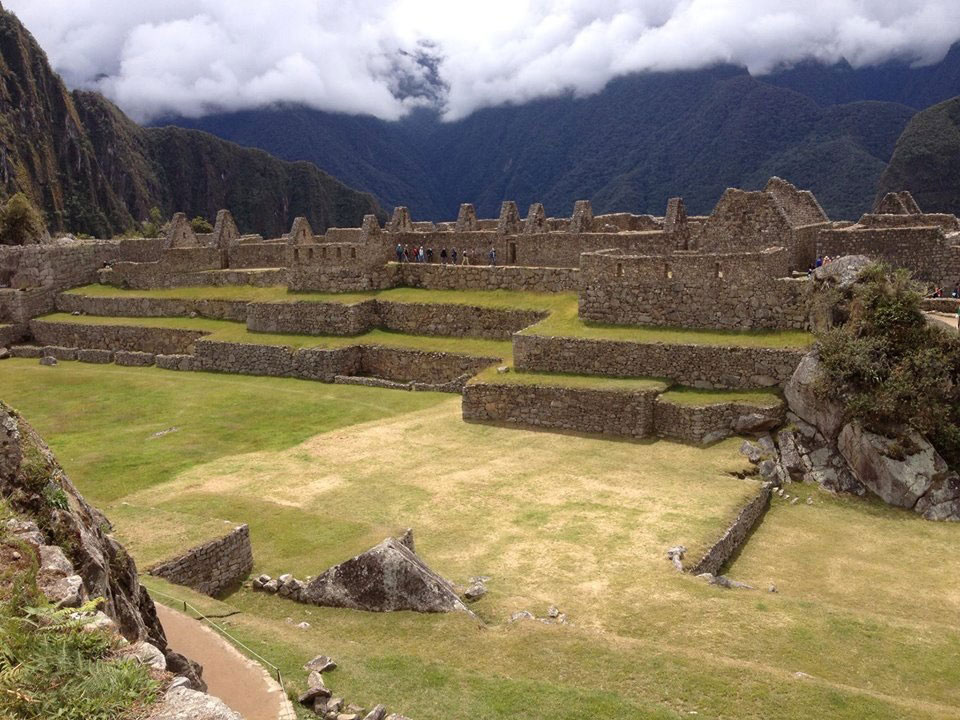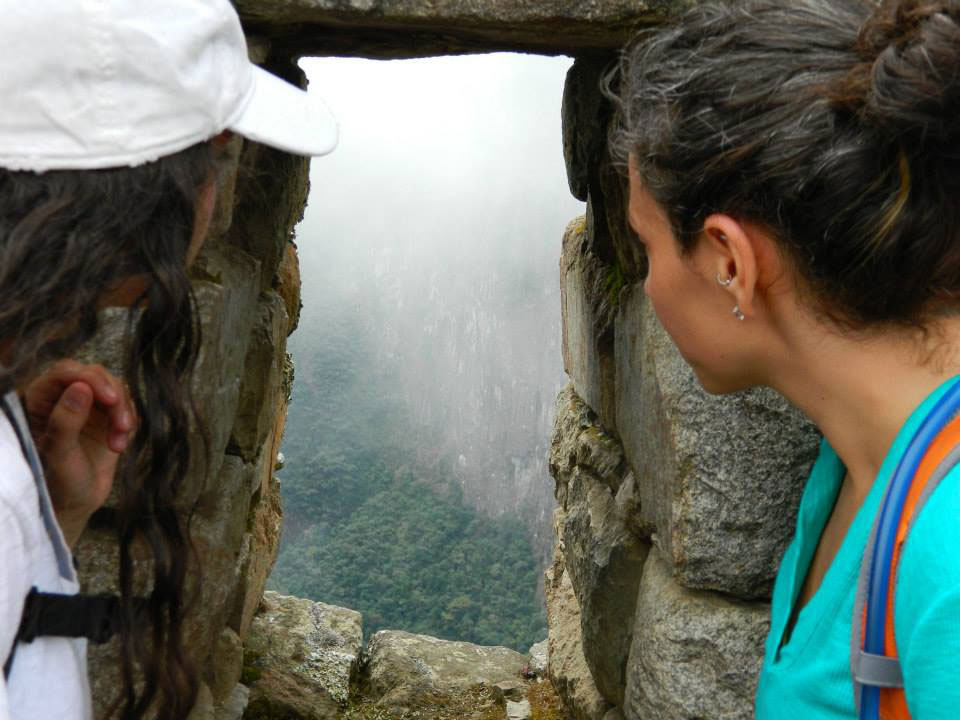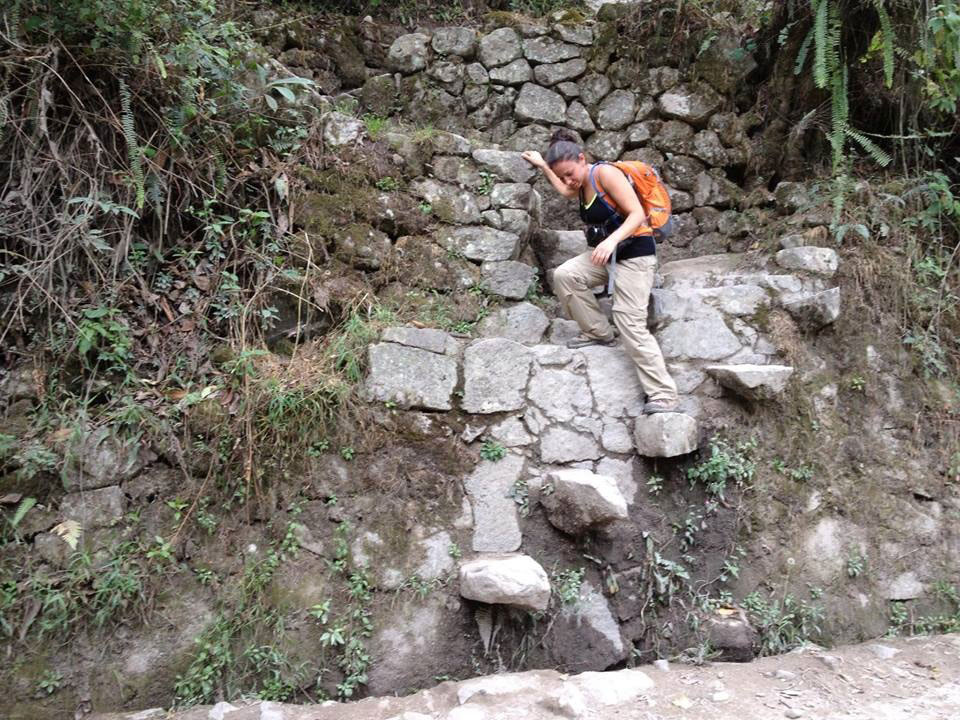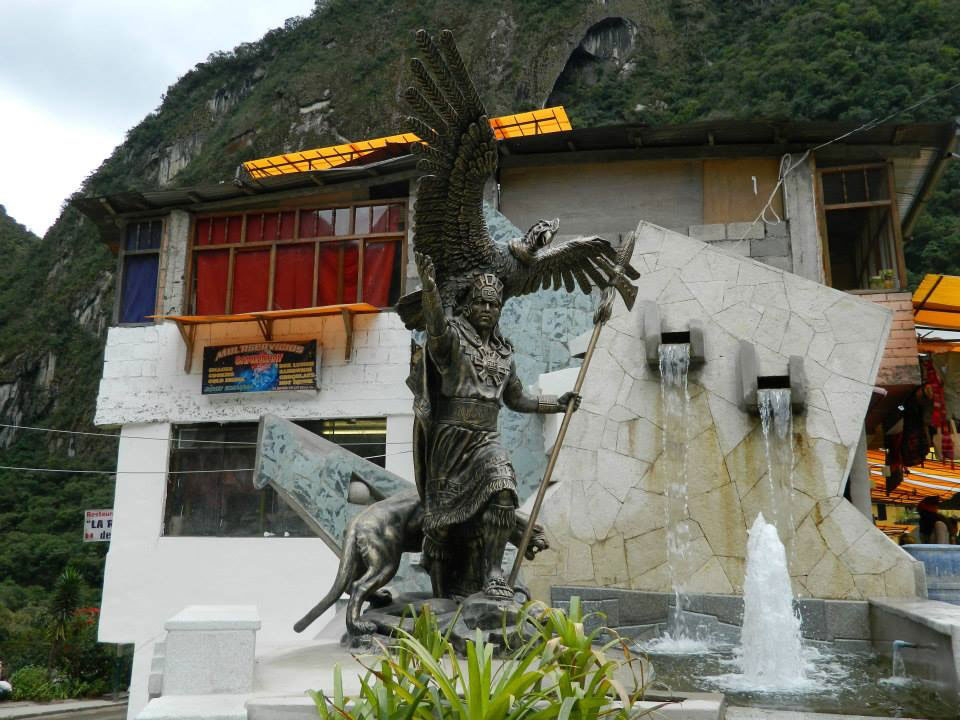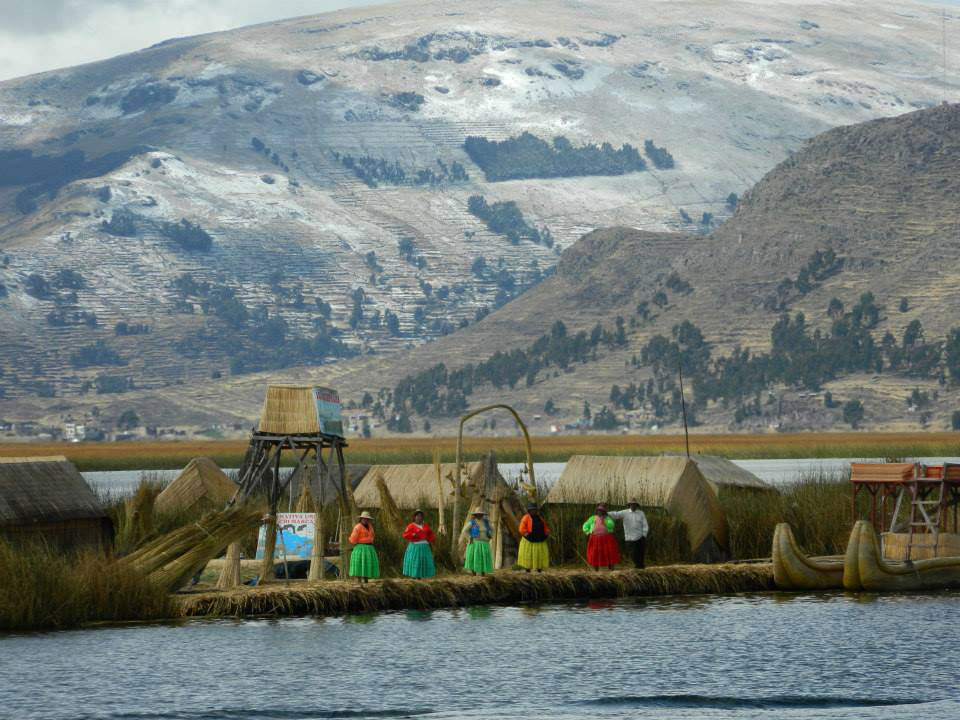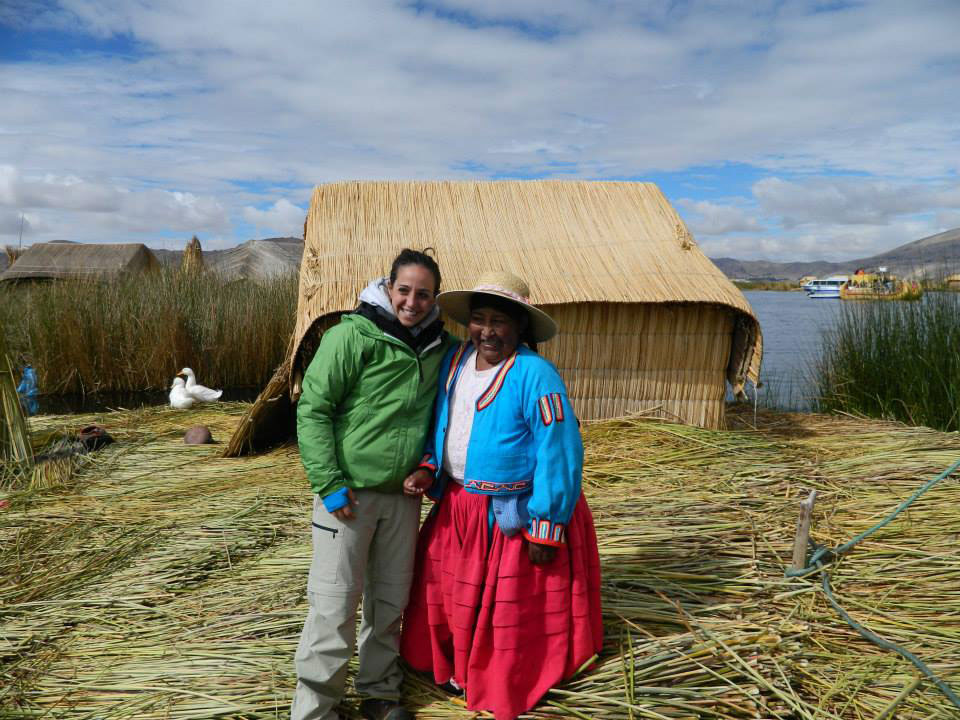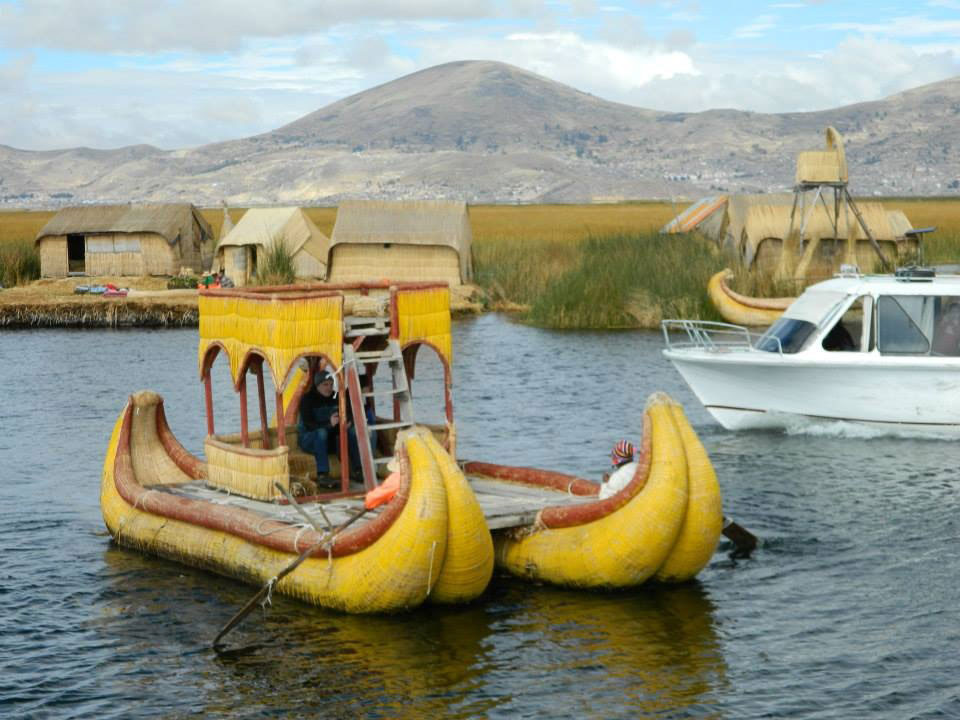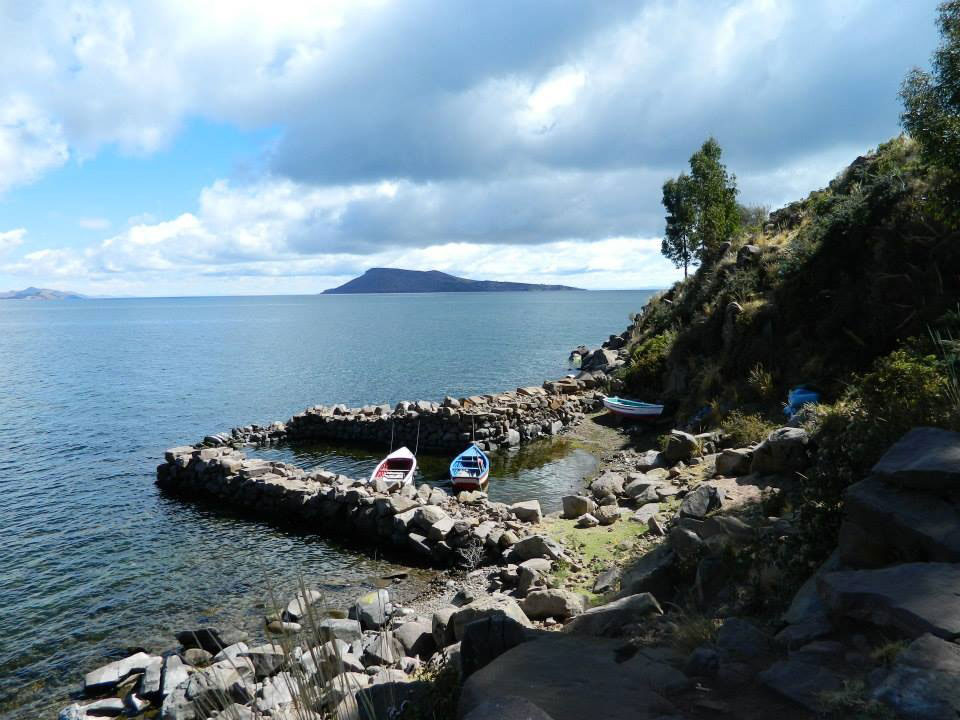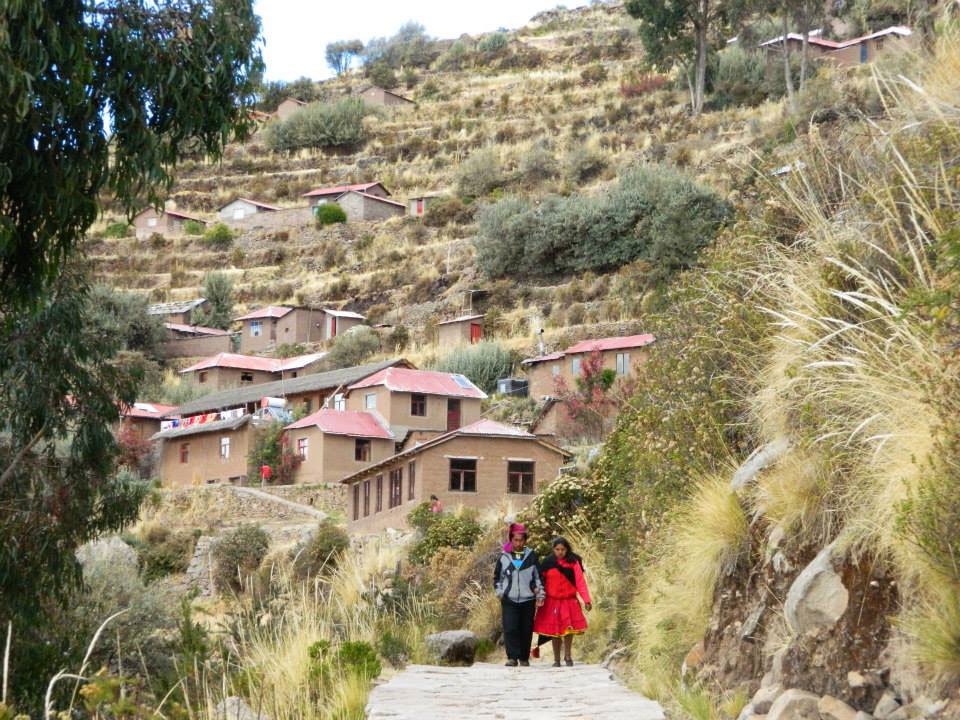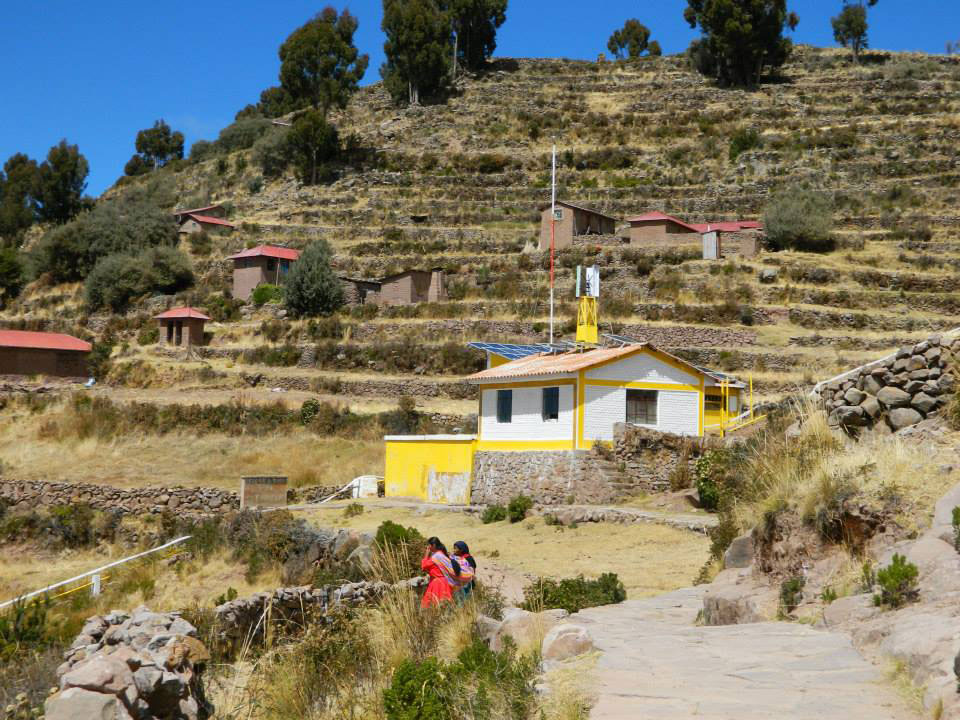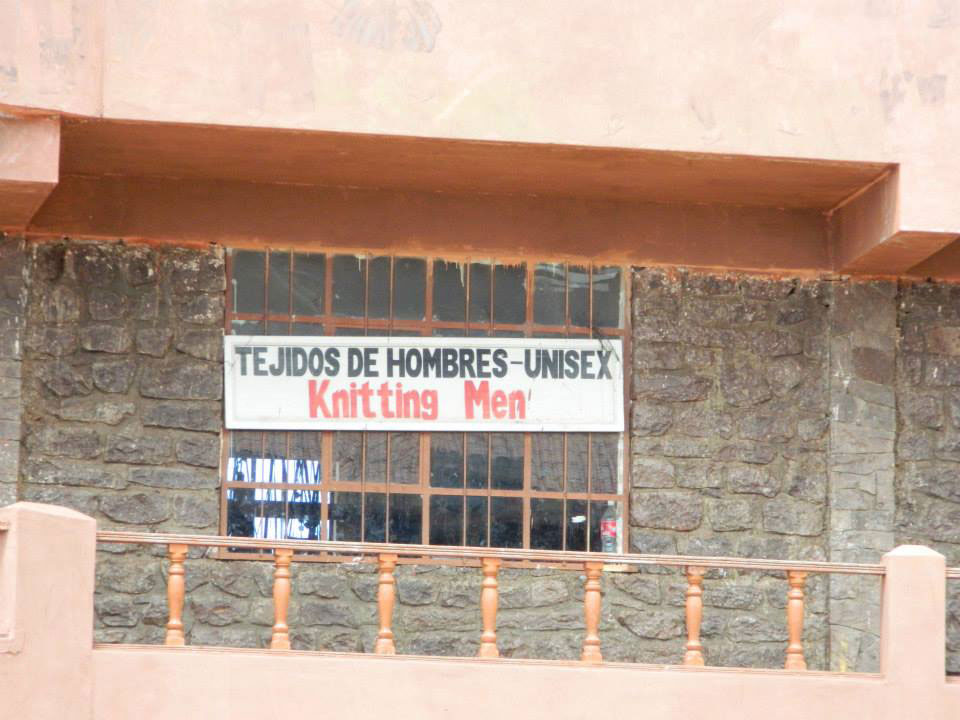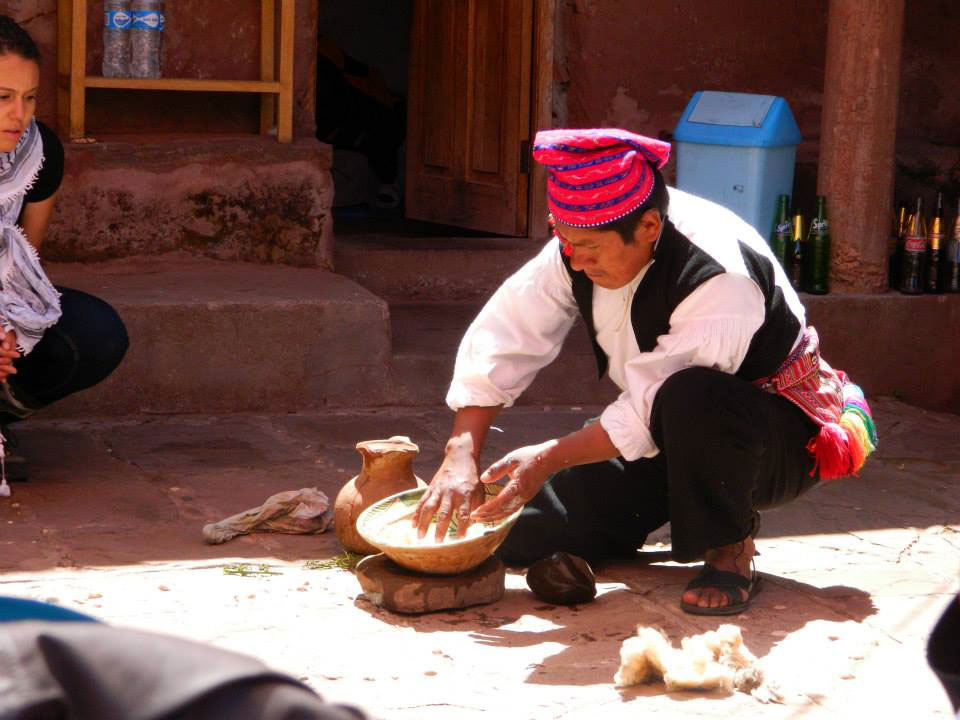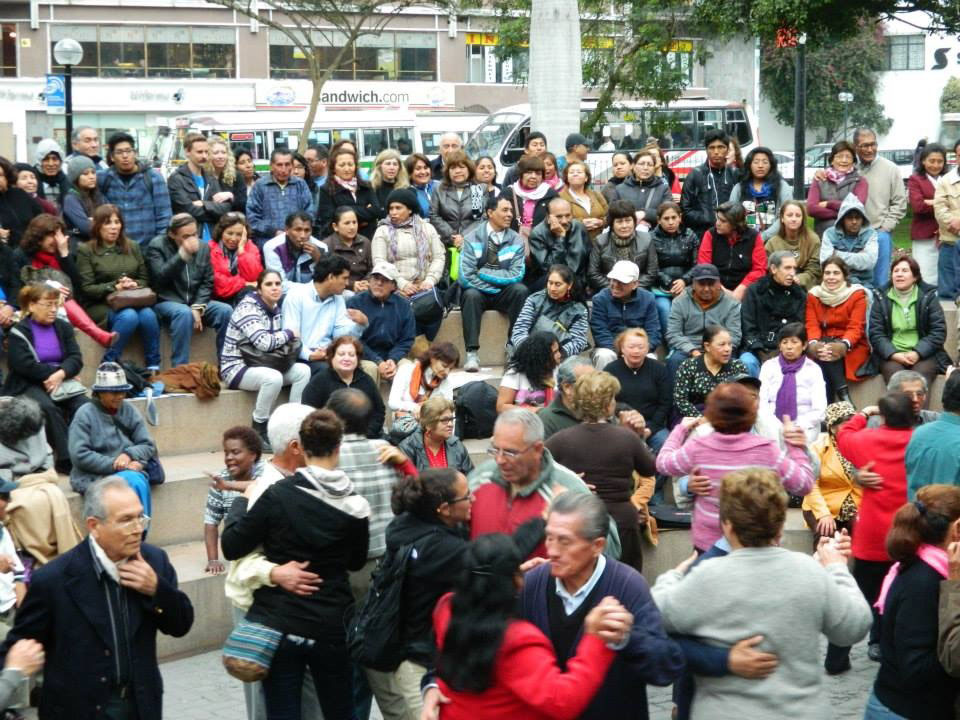In the villages that sit high along the Peruvian Andes, scattered along the Lares region in green valleys and tranquil snow-capped mountains, there is poignant beauty. Ruddy-faced children with dark, dark eyes and dark, dark hair wear the expressions of wise old souls. Plump braided women are clothed in vibrant wool, their hands knotted from years of weaving, cooking and carrying. Ashen men toil, somber, serious.
The poverty that afflicts the indigenous farmers is indefinable by first-world standards. It belies their simple contentment. It’s a wonder.
They greet tourists with casual ceremony. On the one hand, visitors pose cultural intrusion, gawking and marveling at these brilliantly adorned, sandal-wearing aboriginals. Like they’re zoo animals. On the other, visitors bespeak money. Tourists purchase the textiles over which the villagers slave, as they’ve done from childhood, using dyed llama and alpaca wool.
It was with the children that I was most taken. They live in some of the most incredible landscapes in the world, nothing but earth and sky around them, but do they know it? Have they anything with which to compare? Are they happy living with adults who pay them little attention in homes without heat, or is it simply all they know?
During my 10-day trip to Peru in the late summer of 2013, my fellow travelers and I experienced the trek of a lifetime, unlike any other up until that point in my life. My love of nature and culture came together on this trip, and in my 800 photographs I could only capture a glimpse of its true significance.
Note: Hover over a photo or a description to keep it from moving to the next slide.
